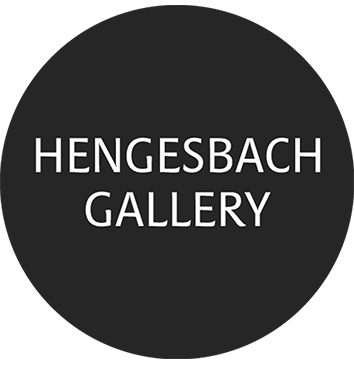Lorcan O´Byrne
August 24 – October 22, 2021
Gliding along, having a stretch of path ahead with the brush as far as the paint lasts, then diving in and continuing, starting anew without noticing the end, instead constantly focusing on the beginning and the continuation. As the fullness grows, daring more and more into the wide surface, getting in one’s own way, crossing over and striking through. The question arises: how can all the paths that were always interrupted or broken off merge into a whole? On its paths, the brush does not only carry one color but several, blending into a shimmering brush trace that, in the overlay, becomes a contrast. As the brush reaches out, exploring the picture space piece by piece, it does not conquer foreign territory in O’Byrne’s paintings. The individual paths merge naturally, gently into one another. Each trace is something distinct, yet not emphasized as special; each trace questions itself in the liveliness of the ongoing life process. When the traces are short, signs or marks are set. Together, they form an alphabet of different movement forms and impulsive dynamics. Unlike language, these formations do not stand in a linear succession in terms of front and back. The readable space also includes the above and below, the emerging from beneath, and the covering. None of these movement signs stand alone; intervening brush traces connect them, and trickles of paint can form a base color. The brush sweeps can also occupy the entire picture surface. Their speed and velocity depend on how the existing moisture of the wall allows the wet brush to glide even more softly.
O’Byrne is a master in composing differentiated fluidities. Like lianas in the jungle, they can entwine into an overall structure. Their density sometimes allows us to experience the rhythmic dance of turns and twists that conquers the entire surface as a whole; other times, the interweaving becomes so overwhelming that our eyes can only capture fragments of dance traces. Sometimes, a fully painted picture may not withstand a scrutinizing gaze, and the brush traces are painted over with white. O’Byrne then intervenes in the still-wet white with a new color, uncovering traces of the old underpainting by destroying the white overlay. The dry, old underpaintings and the new color trace mixing with the white overlay contrast in the differing hardness of contour and color tone. Since O’Byrne needs a lot of paint for this painting technique, he works with a paint container in the other hand, from which he can immediately take new paint in close proximity to the canvas. In this quick, brush-accompanying action, the paint container can also come into contact with the canvas, creating wipe traces that present the brush with a foreign, different element. This can develop into a counter-movement against brush painting, leading to a painting process with two arms, leaving behind two completely different traces. In O’Byrne’s painting, the brushstrokes can become growths, giving rise to the vision of a coherent organic structure that moves in a multi-limbed way. The emergence of such suggestions proves how intimately he is connected with his material after decades of intensive engagement. O’Byrne’s brush unfolds from a humble and at the same time luxuriant, but not domineering or prescriptive attitude toward painting. He does not tolerate overarching directives that dictate the painterly approach. Instead, he allows it to locate itself in the search for his own inner self. His painting is a painting directed towards oneself, towards inner condensations, towards an organic integration, towards a conversation with oneself. Yet it remains a painting of lightness.
